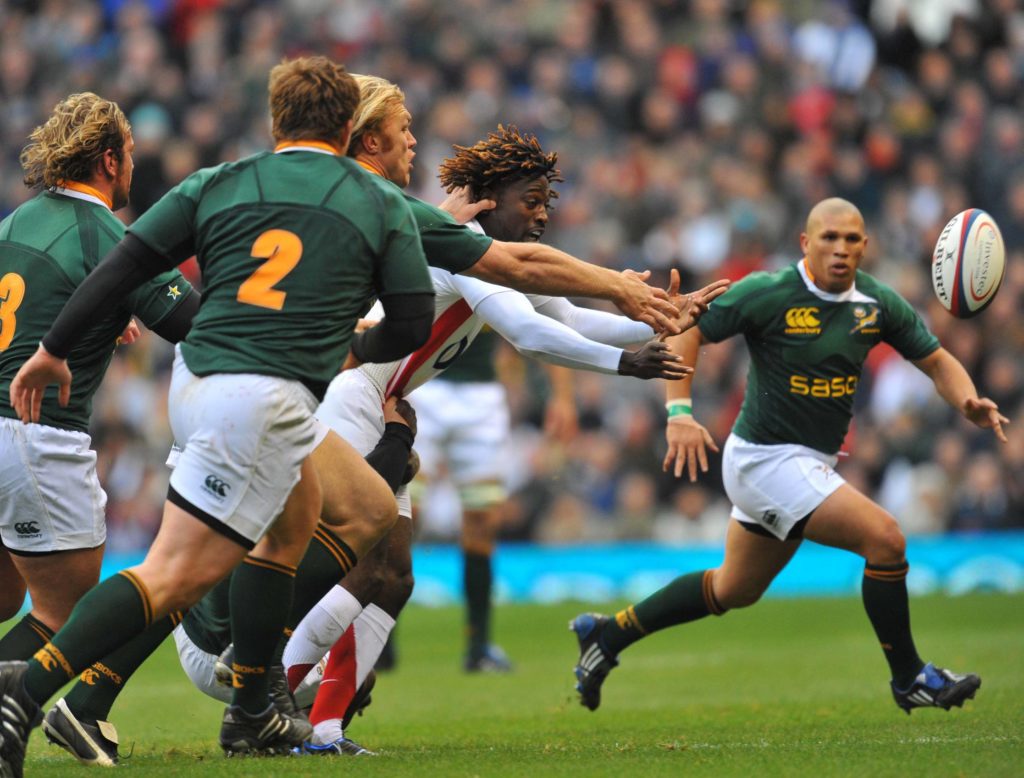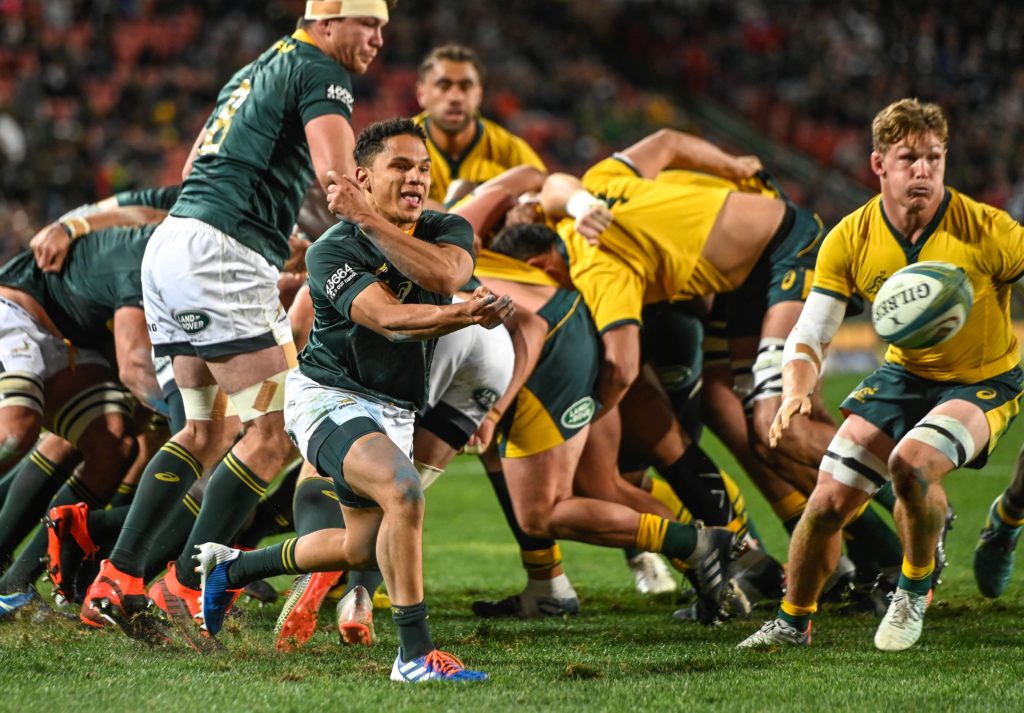Writing about and talking over sport is never ‘just a job’. The nerves jangle and the pulse quickens every time the director’s voice whispers: “Standby commentator, 30 seconds to you.” But has anything I’ve ever watched in the sporting arena made my bottom lip quiver or moved me to wipe moisture from the corner of an eye? Rarely. In fact it’s happened just twice in 30 years.
The absurdity of how an almost over-familiarity with world-class sport can anaesthetise the emotions is perhaps best illustrated by an experience at the Beijing Bird’s Nest 13 years ago when as eight men settled into their blocks for the Olympic 100 metres final I turned to the correspondent next to me and remarked, “I’m going to be at Firhill next Friday night. Glasgow against Connacht. I’m quite looking forward to it.”
It’s not that I am in any way attempting to equate Bernardo Stortoni’s ease under the high ball with Usain Bolt’s blend of grace and power; the point is that different things move different people for different reasons. Having several times in my own athletics career felt the rush of air of a speeding Edwin Moses breeze past me like an intercity express, my senses are slightly dulled to the emotional pull of fast blokes on tartan tracks.
Achievement in the face of adversity or against the backcloth of issues of far greater import than sport are what pull on my heartstrings. The Grand National triumph of Aldaniti and Bob Champion came close. But nothing, not even the true tale of a horse saved from the clutches of the knacker’s yard and his rider from cancer, has moved me more than the 25-year transition of Springbok rugby from pariah to exemplar.
Nothing, not even the true tale of a horse saved from the clutches of the knacker’s yard and his rider from cancer, has moved me more than the 25-year transition of Springbok rugby from pariah to exemplar.
I was at Ellis Park on that crisp, cloudless midwinter afternoon when South Africa met New Zealand in the 1995 World Cup final. To many it was a day when the outcome of a rugby game transcended sport. I was working there for The Sunday Times (the South Africa version) behind correspondent Dan Retief and his No.2 Clinton van der Berg and my role, in the unlikely event of a Springboks victory, was to put together a reaction piece cobbled together with quotes extracted from the game’s great and good found up, down and around the press benches.
It was a match of unbelievable tension. 9-9 after 80 minutes and 12-12 as extra-time moved into its closing minutes. Then came the moment the planets in Joel Stransky’s orbit found themselves perfectly aligned – a drop goal opportunity arrived at the decisive moment and was met with the purest strike.
It was the perfect end to a wonderful South African day. Pre-match, Dan Moyane had sung Shosholoza and Laurie Kay flew his Jumbo to within 200 feet of the stadium roof while Leon Schuster’s Hie Kommie Bokke blasted out to the irritation of the All Blacks during breaks in play. And all along The Old Man looked on wearing his No.6 jersey of green ‘n gold.
Was this the day that gave hope to a divided nation? That was the question I posed as the cup was paraded. Most agreed. One, a former international turned correspondent, did not. “Why don’t you just f… off.”
Perhaps he’d been in the same stadium three years earlier when the Boks made their return from isolation in a one-off Test against the All Blacks. The match only happened because it had the blessing of the ANC whose gesture of conciliation was flung back in their faces by the flying of the Oranje, Blanje, Blou and singing of Die Stem. They were arrogant and defiant acts orchestrated by their rugby union’s president, Louis Luyt. Times were febrile. Just weeks earlier the Boipatong Massacre had made global headlines. Political leaders, black and white, recognised just how fragile things were. A bloody outcome seemed just as likely as a peaceful one. What the country certainly didn’t need was what the world saw at Ellis Park that day.
With that as your point of reference perhaps cynicism of all the Rainbow Nation stuff on World Cup Final day was well-placed.
Again, as in 1992, the Invictus final was witnessed largely by a white audience, secured by a team with just one player from the so-called disadvantaged community, and presided over from a rugby perspective by the same symbol of Afrikaner nationalism, Doc Luyt. What followed that triumph suggests my Test player turned hack may well have had a point.
Over the next two years the fuzzy warm feeling around the Boks fizzled away in dramatic fashion. On the pitch results went the wrong way. Sean Fitzpatrick’s All Blacks returned to South Africa the following year and smashed the Boks. So did the British and Irish Lions in 1997. In between times, a new coach Andre Markgraaff was caught on tape making racist remarks while an exasperated government launched a commission of inquiry into rugby’s administration which prompted Luyt to haul Mandela himself in front of the Pretoria High Court to justify his intervention.
No one would ever pretend it was easy. But Luyt had a habit of making it look more difficult than it ever should have been. On the field, at least, Nick Mallett ’s appointment in the aftermath of the world champions’ Lions defeat restored pride with a sequence of 17 straight Test wins. Off the pitch, though, the goodwill generated in ’95 had dissipated. The trappings of the new South Africa existed – a new flag and anthem – but stubborn, racist attitudes remained. And save for two black wings in most Bok teams the men clad in green and gold were white.
Off the pitch, the goodwill generated in ’95 had dissipated. The trappings of the new South Africa existed – a new flag and anthem – but stubborn, racist attitudes remained.
All of which makes the events of a November afternoon at Twickenham in 2008 all the more remarkable. Six years earlier, an overwhelmingly white South Africa team coached by an Afrikaner, Rudolf Straeuli, had finished a winless European tour with a 50-point thrashing at Twickenham. This time, led by their first black coach and with a team that was the first truly representative selection of the nation, England were laid to waste.
Though the Boks were, once again, wearing the mantle of world champions the mandate given to the new South Africa coach, Peter de Villiers, had transformation at the summit of its priorities. In the 2007 final in Paris, apart from Bryan Habana on one wing and JP Pietersen on the other, the matchday 22 was white and overwhelmingly Afrikaans. The following year against the same opposition at Twickenham, De Villiers picked a backline that featured five players of colour while Tendai Mtawarira, starting at loose-head, was one of three black African front rowers in the matchday squad. The new-look Boks sent the wheels swinging and spinning low off England’s sweet chariot. The Boks scored five tries in a 42-6 rout.
Nothing could touch ’95 for tension and symbolism; Jake White’s 2007 vintage had restored rugby pride; yet it was De Villiers’ Twickenham triumph that signalled the dawning of a new era. It was a sporting miracle.
Sport at the highest level is unforgiving with the slightest weakness exploited. The argument has been long advanced that affirmative action and high-level performance are incompatible. The 42-6 win didn’t refute that. This was a Bok team that had blown away the best that England could muster. What that day witnessed was the fruition of more than a decade of development at grassroots level. Despite all the bad stuff that had gone on – Kamp Staaldrad, the selection of Henry Tromp – beneath it all South African rugby had slowly been transforming itself. And at Twickenham on November 22 2008 rugby’s protea finally came into blossom. It truly was the first day a sporting occasion had moved me to a tear.

The run-up to the second misty-eyed moment was marked again by high achievement both in terms of transformation and on-field success all set against a background of remarkably testing social conditions in South Africa.
Jacob Zuma’s corrupt tenure as President had eroded confidence in the new country and his meddling in the affairs of state-owned assets such as the country’s sole energy provider literally plunged the nation into long periods of darkness. Already high crime rates rose with shocking incidents, such as the murder of farm owners, reaching alarming rates and testing the faith of those present and past Bok boerseuns who remain in touch with their agricultural roots. The economy was faltering and the emigration culture was accelerating.
South African rugby players were among them. Some sought Test and lifetime futures elsewhere while others were lured by euros, pounds and yen on relatively short-term club contracts. To appreciate the lure of international currency, it’s worth recording that the Rand was four times stronger, in relation to sterling, in 1995, when the Springboks won its first World Cup.
The economy was faltering and the emigration culture was accelerating – South African rugby players among them.
It is against this background, as well as that of a faltering team, that Rassie Erasmus turned his back on the comfort of Munster to revive an antelope on the threshold of ICU.
His challenge to save South African rugby demanded a minor sporting miracle. A foundation stone was again a commitment to sustaining transformation in the national team. Eight black players started the Boks’ first Test of 2019 – a 35-17 Rugby Championship win over the Wallabies in Johannesburg – which was the first time black players had been in the majority. Such was the maturation of the South African media and wider public that this significant landmark was reached with little public acknowledgment.

Erasmus took this policy all the way to the World Cup, where in one of the pool matches, nine black players were named as starters. And on November 2 2019 the Springboks lined up in Yokohama with a matchday squad that for the first time in a World Cup Final truly reflected the demography of its nation. Lukhanyo Am and Makazole Mapimpi, products of the dusty and rutted fields of the eastern Cape, combined to score the first try while Cheslin Kolbe, who was once told by a coach he was a “dwergie” (dwarf) and too small to play rugby, turned the England defence inside out to touch down for the second. And for Siyi Kolisi, another of humble disadvantaged beginnings, to be the man who lifted the cup was the final, ultimate lump-in-the-throat moment.
This truly was South African rugby’s greatest day.
More South Africa stories
If you’ve enjoyed this article, please share it with friends or on social media. We rely solely on new subscribers to fund high-quality journalism and appreciate you sharing this so we can continue to grow, produce more quality content and support our writers.




Comments
Join free and tell us what you really think!
Sign up for free